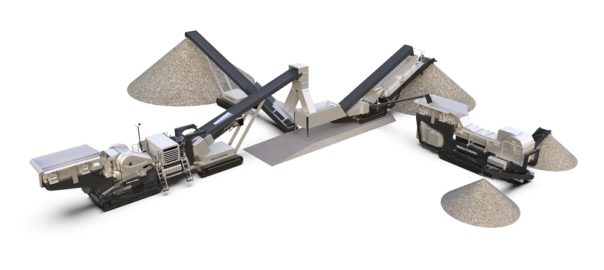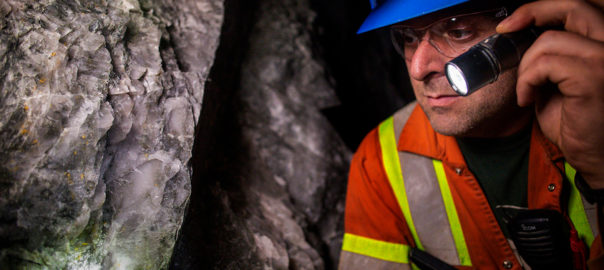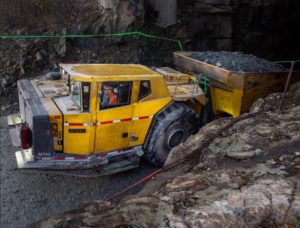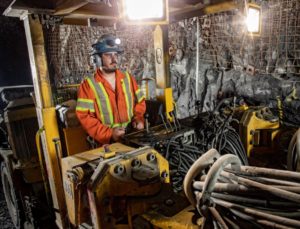Metso Outotec stands out among the mining original equipment manufacturers for having publicly acknowledged ore sorting is on its radar.
The Outotec business had a relationship with TOMRA Sorting Solutions dating back to 2014 when the two companies signed an agreement that would see the particle sorting company supply Outotec-branded sorting solutions to the mining and metallurgical industry. Metso, meanwhile, has previously disclosed it was developing “breakthrough proprietary technology to address the demand of high throughput accurate sorting”.
Close to eight months after the two companies merged to become Metso Outotec, IM put some questions to Erwin Huber, Vice President, Crushing and Conveying Systems; David Di Sandro, Business Development Manager – Optimisation and Test Labs; and Rashmi Kasat, VP, Digital Technologies, Minerals, to find out the current state of play with ore sorting at the mineral processing major.
IM: Back in November at your Capital Markets Day, there was mention of ‘AI-powered Ore Sorting Solutions’ during a presentation. Can you expand on what this offering might include? What stage is it at in terms of commercialisation?
DDS: Ore sorting is one of the most exciting recent developments in our industry. With improvements in sensor capabilities and adoption of artificial intelligence (AI), this may well become the revolutionary change this industry needs to sustain itself in the face of diminishing grades and orebody quality.
EH: With our ore sorting solution development, we are targeting the ability to deliver complete offerings of hardware and sensor-fusion platforms as it relates to both bulk and particle ore sorting. These platforms would utilise AI to optimise the feed material for the downstream process. Metso Outotec is uniquely positioned to understand and optimise that plant feed stream with deep knowledge and almost complete technology coverage in both the concentrator and tailings processing areas.
We plan to bring new solutions to the market in the short term and continuously launch new technologies to increase capabilities and capacities when the developments are mature enough.
IM: Will these solutions leverage existing tools within the Metso Outotec product offering? Will they make use of existing agreements with other companies (for instance, the agreement with TOMRA that Outotec previously had in place)?
EH: Metso Outotec carries out its own development of these solutions, and some partnerships are part of it once sensoring and analysing different minerals and elements are not possible with a single or only a few technologies. Mining and concentration are becoming more and more a digital world where breakthrough innovation is finding its space towards efficiency and sustainable possibilities. Smart systems will enable improved equipment uptime, efficiency and remote diagnosis of process and maintenance, and will be the bonding element between our traditional offering portfolio and new technologies.
IM: Previously Metso has talked about the development of a bulk sorting solution: do these ‘AI-powered Ore Sorting Solutions’ fit into that category, or are they more particle sorting solutions?
EH: Bulk ore sorting enables material selection at high throughput flows and particle technology is limited by capacity while bringing the benefit of high accuracy on selectivity.
RK: Bulk sorting is in its early stages in industry and no single sensor can determine minerals content across all ore types and mine sites. This is where AI algorithms play a significant role in ‘self-learning’ ore characteristics, mine site by mine site. It also provides great opportunities to do sensor fusion and more accurately determine the minerals content based on outputs from various sensors and sensor types. AI augments our expert’s tacit knowledge and provides a more reliable way over time to analyse big data generated from online mineral analysis.
IM: Where in the flowsheet do you envisage these solutions going?
EH: The earlier we can remove the gangue from the flow stream, the better our energy efficiency will be by reducing the volume of waste material that is processed by downstream equipment. Deposits in advanced development allow for in-pit backfill bulk ore sorters that may be deployed behind mobile in-pit crushers, or before the coarse ore stockpile where backfilling is not an option. There are several pre-concentration technologies that can be applied at each stage of mineral processing and the ideal operation should combine those tools to remove the liberated gangue at multiple stages of the processing plant in order to achieve the most sustainable process (ie bulk/particle ore sorting, selective breakage, coarse flotation).
IM: Will the benefits of your solution be felt beyond the crushing and grinding stage? Do you intend to use the data generated from the ore sorting solutions to benefit the whole downstream flowsheet?
DDS: One of the benefits of ore sorting is more efficient removal of waste from the process feed. Under certain circumstances, this also means removal of deleterious material which otherwise would adversely affect downstream process performance such as flotation recoveries. In these cases, the downstream benefits are intrinsic. The key would be understanding the geometallurgical mapping of all rock types and their mineralogy, so a philosophy of ‘include or reject’ can be applied on a metallurgical response basis. This mapping can be improved with SmartTag™ and GeoMetso™ technologies from Metso Outotec.
EH: The ability to sort, the geometallurgical mapping and metallurgical response obviously feed back into the block model and allow for more options in the mine plan and life of mine resource recovery, for example with the deployment of low-grade stockpiles. This further enhances the sustainability of the mining operation.
IM: Is the market ready for and receptive to such a powerful ore sorting solution?
DDS: As we all know, for good reason, our industry is full of early adopters rather than innovators. Most operations will need to see the technology succeed elsewhere before increasing their uptake of the technology. The initial implementation will likely occur in partnership with customers whose operations need this technology to be economically viable.
EH: The key is to understand the ore variability through the deposit and through the life of mine. Adopting ore sorting as an integrated processing step does not differ that much from testing and sizing flotation circuits, where small changes in ore properties can affect the overall recovery. It is important to understand these changes and how to react to them during operations.
The confidence level in sensor-based ore sorting testing will grow over time. We already see real-life examples where customers report on ore reserves based on lower cutoff grades due to ore sorting.
IM: Anything else to add?
EH: Despite the fact that the concept of ore sorting, and the sensors required to detect the valuable ore from the waste, have existed for several years, if not decades, the implementation of these systems in full-scale operations have been relatively restricted to particular cases with the right kind of orebody to make the process viable. Implementing ore sorting more broadly remains the challenge and requires the dual application of the right sensors working effectively with the right mechanical handling systems to detect and remove the waste stream efficiently and accurately. The skills required to solve these challenges are not just for the traditional mining and mineral processing engineers, but need to include a cross-disciplinary team addressing the issues from all angles.
This Q&A interview was carried out as part of the IM March 2021 annual ore sorting feature, to be published early next month










